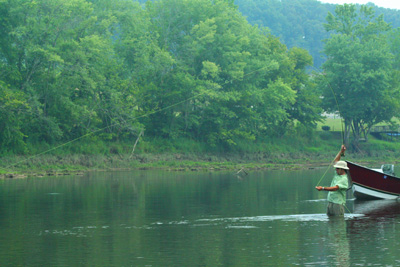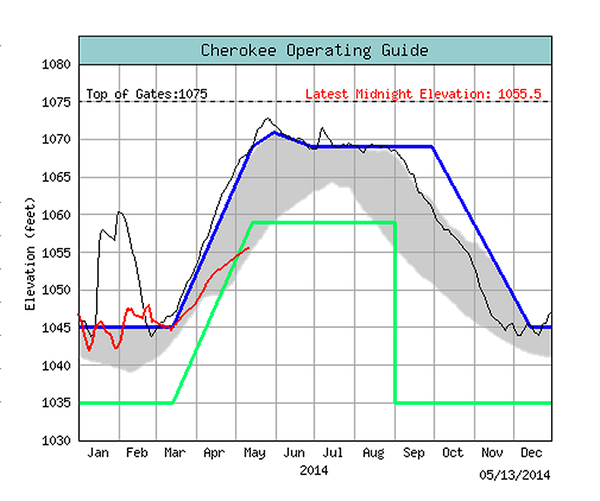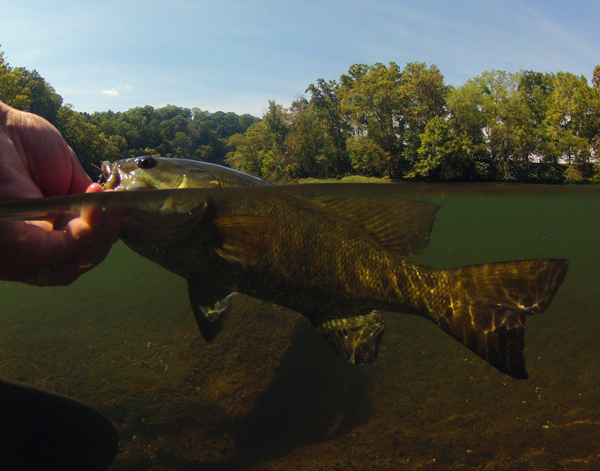We’re far enough along in the season now that we’re able to start looking into the crystal ball for how fishing will progress into the summer. There’s always a degree of uncertainty more than a few weeks into the future, but our tailwater rivers are a little easier to predict in terms of how flows will be.
Right now there’s a mixed bag of situations across the system of TVA reservoirs. Some of the reservoirs are well below their normal levels while others are right on target or a little high for the date. This is where I hate to come out and say it, but the situation that’s shaping up could be one of the best for fishermen we’ve seen in a long time.
The biggest news out there right now is that both Norris and Cherokee Lakes are well below their normal levels for this date. In fact there is speculation that barring some torrential rains these reservoirs will not reach their typical summer levels. If you’re a water skier this is bad news since there’s less lake and more snags to potentially knock the prop off of your speeding boat if you stray from the main channel.
This translates into good news for trout and smallmouth fishermen in the rivers below the dams, though. There will be less water available for power generation which means there will be less high water this summer. Expect the usual periods of high water on the Clinch River, but it’s doubtful that TVA will be able to run the water for very long as they want Norris Lake to arrive at and maintain a minimum level into August.
You’ll notice the red line which is the current lake level is just barely above the minimum, the green line. This shows that if TVA steps up generation the lake will fall below the point where it needs to be. In short, expect some good flows for wading with periods where floats show go off without a hitch as well.
The situation over on the Holston River is a little more complicated and we could probably start a good bar fight interpreting the data.
As you can see the lake is well below where it should be and probably won’t get there for a while. This also points to low generation on the Holston River this year. We’ve already seen some wailing and gnashing of teeth from local fly fishers who are predicting gloom and doom for this trout fishery. Low flows warm up quicker in hot weather so there will be some marginal water temperatures.
We’re going to put the positive spin on this though. The critical thing to consider is where those “marginal” water temperatures will be. Minimum flows from the dam conserve cold water in the lake which can be an issue at Cherokee. Even as downstream flows will warm, the flows will remain colder than average closer to the dam and this is a positive thing.
Temperatures will likely be too warm for trout around Nances Ferry this year, but this is generally more of a smallmouth bass fishery than trout. TWRA stocks trout here because of the great wading access and because the water often remains cool enough for trout some years.
The real benefit of this situation on the Holston will be that smallmouth fishing should be excellent this year because of flows that will keep the river accessible. The one thing that could throw a wrench into our optimism would be a scorching heat wave. That would warm water throughout the lower Holston system.
The South Holston and Watauga Rivers both look like they will see a typical year. Both of these rivers usually have flows that work for most anglers where both waders and floaters can find water to suit their needs. Watauga and South Holston reservoirs are both at typical levels.
The Hiwassee also seems to be on a major comeback. Lake levels higher in the system at Chatuge and Hiwassee reservoirs seem to show good flows are likely to emerge from Apalachia reservoir into the trout fishery near Reliance, TN. Many anglers are often frustrated with the Hiwassee as it’s often too high for much wading in the summer and the river becomes the playground for rafters or those with drift boats. The truth of the situation though is that the river would warm quickly without those flows so waders must be content with the low flows that might be found in the early mornings.
And of course, we’ll all get what we get…




